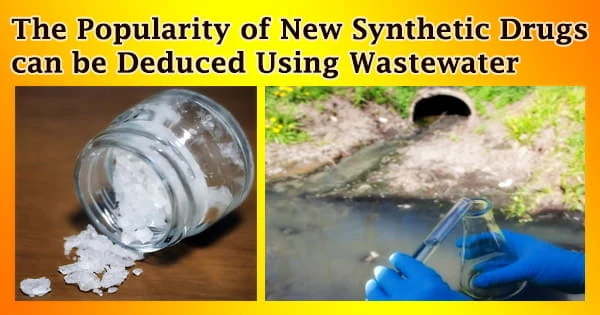Hundreds of new synthetic medications have appeared throughout the years that replicate the effects of both illegal and legal substances. Each drug’s international popularity is difficult to track due to the underground nature of its manufacture and delivery.
Synthetic drugs are designed to replicate the effects of illegal substances including cannabis, cocaine, and ecstasy. Because synthetic medications are not subjected to quality control, it is not always possible to determine what compounds they include.
Researchers at the American Chemical Society’s Environmental Science & Technology Letters claim a surge in the international use of several synthetic pharmaceuticals, such as eutylone and 3-methylmethcathinone (3-MMC), based on wastewater from the days leading up to the 2021 New Year holiday.
Synthetic stimulants are commonly used by well-integrated young people, but they can lead to chronic drug issues in places like Northern, Central, and Eastern Europe. The disposal of toxic waste generated during the production of stimulants constitutes a health concern and damages the environment.
Drugs created in secret labs without standardized procedures or components, as well as medications diverted into the criminal NPS market, are examples of novel synthetic drugs, often known as new psychoactive substances (NPS).
Overdosing on these substances can result in death. Forensic toxicologists, drug enforcement agencies, and public health officials all keep track of NPS, but their global reach remains illusive since each organization collects and keeps data in different ways, and not every user or dealer is identified.
Wastewater epidemiology, on the other hand, is a comprehensive survey of community-level drug consumption or disease presence that can give widespread, consistent, and near real-time data.
Because everyone uses the restroom at some point, this study keeps track of all users. Previously, Richard Bade, Cobus Gerber, and colleagues utilized this method to determine the popularity of various NPS in eight nations during the 2019-2020 New Year period.
Synthetic drugs have chemical structures that are distinct from the illicit compounds they are attempting to imitate. Synthetic drug makers are continually changing their molecular structures in order to keep ahead of the law.
However, because of the frequent unpredictability of NPS distribution and the COVID-19 pandemic’s constraints, the researchers intended to follow which drugs were most common over the most recent New Year’s holiday, adding new locations and countries.
The researchers gathered raw wastewater samples from 25 treatment plants in ten countries across Asia, Oceania, Europe, and North America in the days leading up to January 1, 2021. They looked for 27 unmetabolized NPS using liquid chromatography-mass spectrometry.
Eleven of these chemicals were found, with only one site in Fiji having no detectable levels of any of them. The majority of the substances were synthetic cathinones, popularly known as “bath salts,” according to the researchers.
Methcathinone, eutylone, and 3-MMC were the most commonly detected NPS in wastewater, with the greatest per capita values. However, because methcathinone may also be produced by the breakdown of two legal decongestants, ephedrine and pseudoephedrine, the researchers were cautious to attribute it only to illegal drug use.
Finally, when the researchers compared the New Year time of 2020-2021 to the previous year’s holiday, they discovered that eutylone and 3-MMC had boosted their international presence. Despite international travel limitations, they claim that 3-MMC was discovered for the first time in New Zealand.
The researchers claim that by expanding the number of sites and nations studied, they were able to gain fresh insights into the continually altering worldwide NPS consumption patterns. There is limited information on people who want to reduce or stop using synthetic cathinones.
Synthetic cathinone users have expressed a significant urge to redose (take further doses) as well as dependence.
The authors acknowledge funding from South Australia Health, the European Union’s Justice Programme Drugs Policy Initiatives, Generalitat Valenciana, and the National Science Foundation’s Chemical, Bioengineering, Environmental, and Transport Systems (CBET) Division.
Two of the study’s authors are co-founders of a commercial wastewater epidemiology firm, and one is the creator of a nonprofit wastewater testing project.
















